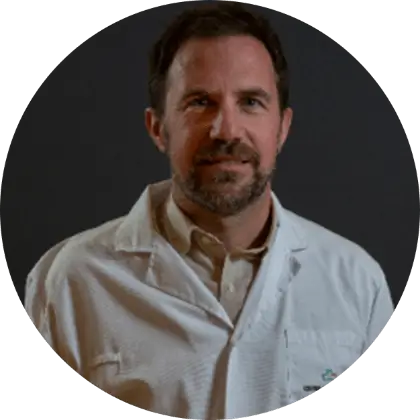Transcatheter Mitral Valve Repair: Past, Present, and Future

Mitral regurgitation (MR) is a serious heart condition where a leaky mitral heart valve cannot stop blood from flowing back into the heart. Severe regurgitation affects about one out of every ten adults over 75.
Commonly, mitral valve surgery is the treatment for patients with MR. However, some patients with severe regurgitation cannot withstand open-heart surgery. Recently, transcatheter technology has been developed to allow the minimally invasive repair of a leaky mitral valve. The term ‘Transcatheter’ denotes a procedure performed through a catheter, a small flexible hollow tube. Most of the transcatheter procedures are performed through a small puncture on the groin.
Current mitral valve repair procedures are performed with the edge-to-edge technique using clip devices such MitraClip and Pascal. These procedures have been successful in repairing the function of a damaged mitral valve and restoring normal blood flow by transcatheter implantation. Other bioprosthetic valve devices are still being developed for transcatheter mitral valve replacement.
A Leaky Mitral Valve
The mitral valve is situated between the left upper (atrium) and lower (ventricle) chambers (ventricle) of the heart. A healthy mitral valve allows blood to flow from the atrium into the ventricle and prevents it from flowing back.
The function of the mitral valve can be impaired in case of mitral valve regurgitation:
- This cardiac disease happens when the flaps of the mitral valve cannot close properly
- A loose mitral valve allows some of the blood to leak backward into the left atrium
- As a result, the left atrium expands, and the left ventricle has to work harder
- This can lead to irregular heartbeats (atrial fibrillation), heart muscle disease (cardiomyopathy), and heart failure.
Mitral regurgitation (MR) is the second most common valvular disease and affects 33.6% of the population. MR can happen because of degenerative or structural defects that arise as a result of aging, infection, or congenital anomalies.
On the other hand, functional mitral regurgitation also occurs when the size and shape of the heart muscle change, preventing the mitral valve from opening and closing properly.
What is Transcatheter Mitral Valve Repair?
Transcatheter mitral valve repair (TMVR) is a minimally invasive procedure done to restore the proper function of a leaky mitral valve without replacing it. In TMVR, the mitral valve is repaired without open surgery. Instead, your doctor will insert a catheter through your blood vessels to reach and repair the damaged valve.
Mitral valve repair (MVR) surgery is currently the most common treatment for patients with a leaking mitral valve (regurgitation). This surgery involves opening the chest with a large midsternal incision, followed by open surgical repair of the damaged valve.
More recently, transcatheter mitral valve repair has been gaining popularity. It is now considered a feasible, safe, and less invasive alternative to open-heart MVR surgery.
Who is a Good Candidate for Transcatheter Mitral Valve Repair?
Repairing a leaky mitral valve has been the principal treatment option for patients with chronic severe mitral regurgitation (MR) that could not be controlled with medication.
It is important to carefully select patients suitable for catheter-based treatment of mitral regurgitation. Eligible patients are usually:
- High-risk patients with degenerative MR who are considered not suitable for heart valve surgery. They are usually older patients with multiple chronic health conditions that make them more likely to experience complications from major surgery.
- In patients with functional MR, where the mitral regurgitation is due to a dilation of the ventricle (no direct damage on the valve itself), transcatheter edge-to-edge repair is considered the first line therapy.
To date, clinical trials are still being conducted to determine how effective TMVR is in low and moderate-risk patients and those with functional regurgitation.
How is Transcatheter Mitral Valve Repair Done?
Surgeons have found that mitral valve repair has advantages over valve replacement with degenerative MR. Since then, techniques for mitral valve repair have been developed to reconstruct the dysfunctional valve.
Mitral valve repair in the past
The first attempts at mitral repair started with balloon catheters (balloon mitral valvuloplasty) in the ’80s. This catheter technique opened the door for new technological advancements in catheter-based mitral repair.
Later on, in the ‘90s, edge-to-edge mitral valve repair was introduced and has been progressively used to restore mitral competence.
The edge-to-edge procedure restores the mitral valve's normal function. It accomplishes this by bringing the edges of the valve's two leaflets closer together. As a result, the valve can function properly and prevent blood backflow.
Current devices used in mitral valve repair
Recently, the most popular transcatheter mitral valve repair technique is the edge-to-edge. It involves the transcatheter implantation of a clip that essentially sutures the valve leaflets and brings them together into a firmer position.
During mitral valve clip procedure:
- The groin area is cleaned and sterilized
- General anesthesia is administered so you would not feel any pain or discomfort
- A catheter (thin tube) is inserted into a leg vein in the groin and guided to the heart with the help of real-time X-Ray imaging
- Using a clip inserted through a catheter, the doctor fastens the leaflets of the mitral valve together
- The clip closes off only part of the valve, with blood still flowing around the repaired area when the valve opens
- The clip helps the valve leaflets remain closed and prevents the backflow of blood when the valve closes
This procedure typically takes 1-3 hours, and most patients can return home within 2 days.
There are currently several devices available to treat mitral regurgitation using a catheter. Multiple clinical studies on large groups of people have proven the efficiency and safety of the following two TMVR devices:
- MitraClip: A mitral valve clip that is smaller than a dime which allows it to be inserted by a catheter.
- Pascal and Pascal Ace: This device consists of broad paddles and a contoured inner spacer that maximizes leaflet suturing, leading to effective MR reduction.
Transcatheter Mitral Valve Repair has shown similar improvement in symptoms and survival compared with mitral valve surgery.
Future options for mitral valve repair
A number of bioprosthetic valve devices are being evaluated for their safety and efficiency to be used in the repair of mitral valves.
The transcatheter implantation of these devices on top of a regurgitated mitral valve will offer MR patients a minimally invasive treatment option for valve replacement.
Current transcatheter mitral valve implantation devices include:
- TENDYNE by Abbot: A self-expanding bioprosthetic valve made of porcine (pig) heart tissue.
- TIARA by NEOVASC: A D-shaped self-expanding valve made of bovine (cow) heart tissue.
- INTREPID by MEDTRONIC: A circular valve with two stents made of bovine heart tissue.
- CARDIAQ / EVOQUE: A self-expanding valve with engaging anchors made of bovine heart tissue.
- CAISSON: A D-shaped self-expanding valve made of porcine heart tissue.
What are the Risks of Transcatheter Mitral Valve Repair?
As with any surgery, there are some risks associated with catheter mitral valve repair, including:
- Vascular complications
- Lung complications
- Gastrointestinal complications
- Bleeding
- Kidney failure
- Sepsis (blood infection)
- Stroke
Open Heart Surgery vs. Transcatheter Mitral Valve Repair
The transcatheter repair of a damaged mitral valve requires careful patient consideration. Patients who cannot withstand an open-heart surgery may be candidates for this minimally invasive mitral valve repair.
Unlike open-heart surgery, the mitral clip procedure does not involve opening the chest and stopping the heart, which can be risky for many patients. Most patients experience an improvement in the function of their mitral valve and quality of life soon after the clip repair.
To ensure the safety and success of the transcatheter mitral repair procedure, doctors carefully select eligible patients using high-tech diagnostic tools and strict criteria. After making sure that Transcatheter Mitral Valve Repair is a suitable option, doctors choose the appropriate TMVR device with careful consideration.

Prof. Dr. Dabit Arzamendi is a Cardiologist at the Teknon Medical Center, Barcelona. Specialized in interventional cardiology; he is a national expert of reference for percutaneous or minimally invasive valve intervention. Dr. Arzamendi has achieved specialized training in coronary interventionism from the Montreal Heart Institute (Université de Montréal) and in structural interventionism from the Massachusetts General Hospital (Harvard University). He has worked as an Associate Professor at the Autonomous University of Barcelona, undertaken training programs, and also spoken at medical congresses and conferences globally. He has numerous book chapters and scientific publications to his credit.
Dr. Arzamendi is a noted expert in the percutaneous treatment of the aortic valve, the mitral valve, and the tricuspid. He also specializes in therapies to reduce cerebrovascular accidents (cerebral embolisms) through the repair of intracardiac septal defects (ASD and PFO) and the closure of the left atrial appendage. He has extensive experience in the treatment of coronary heart disease, including the treatment of complex coronary lesions.

At Quironsalud’s Teknon Medical Center in Barcelona, our team of doctors and nurses have extensive experience in mitral valve repair and access to the most advanced diagnostic resources. This allows them to adequately select patients eligible for transcatheter mitral valve repair and successfully treat mitral regurgitation.
Our cardiology referral center is one of the top centers in Europe that can successfully and safely perform this delicate valve repair procedure. Our center in Barcelona, Spain uses state-of-the-art multimodality imaging tools and advanced transesophageal echocardiography (TEE) to accurately evaluate the patient’s heart condition and function. Our medical team is made up of the top cardiologists and anesthesiologists in Europe, employing extensive skill and a wide range of advanced testing techniques to foresee and avoid any possible risks.
Sources:
Featured Blogs



